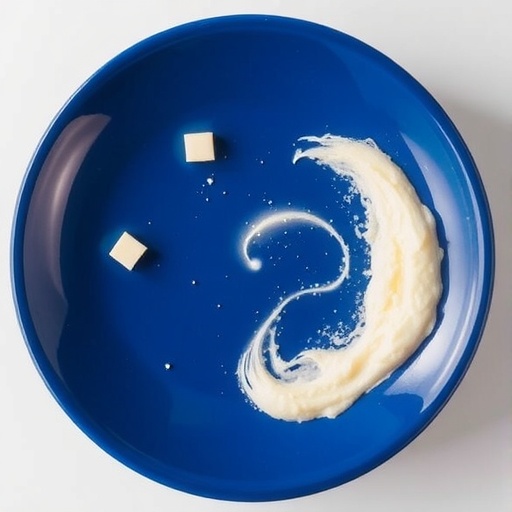In a striking departure from long-held assumptions in food science and microbiology, researchers at the University of British Columbia have uncovered compelling evidence that our gut bacteria possess the remarkable capability to metabolize artificial cellulose derivatives—complex polymers widely used as thickening agents in everyday foods. This groundbreaking discovery challenges the entrenched belief that such substances merely transit the human digestive system unaltered, instead revealing an intricate microbial interplay driven by biochemical enzyme activation.
Cellulose derivatives have been staple components in various processed foods including condiments like ketchup, creamy salad dressings, and even personal care products such as toothpaste. Derived as modified forms of natural cellulose, these molecules exhibit a highly branched and complex chemical structure, which confers their functional effectiveness as thickeners by enhancing viscosity and texture. Historically, due to their synthetic origin and structural resilience, scientific consensus held that they were indigestible by the human gut flora, passing through the gastrointestinal tract largely intact and contributing neither nutritional value nor metabolic byproducts.
However, the new research pivots on a critical nuance: these bacteria, when ‘primed’ by exposure to natural polysaccharides commonly found in whole plant sources—specifically β-glucans—can activate enzymatic pathways that enable them to break down these otherwise resistant cellulose derivatives. By mimicking dietary conditions that incorporate complex carbohydrates from fruits, vegetables, and cereals, the researchers revealed that specific gut microbes, particularly within the Bacteroidota phylum, express surface-bound enzymes capable of cleaving these large polysaccharide molecules into utilizable sugar monomers.
This finding emerged from carefully controlled in vitro studies wherein bacterial cultures previously exposed to plant-based β-glucans exhibited measurable growth when subsequently provided with artificial cellulose derivatives as the sole carbon source. The enzymatic activity underpinning this metabolic adaptation appears closely linked to glycoside hydrolases and polysaccharide lyases, classes of enzymes that catalyze the hydrolysis of glycosidic bonds, thus enabling access to energy stored in complex carbohydrate structures. This symbiotic biochemical mechanism not only highlights the plasticity of the human microbiome but also ushers in new considerations regarding how food additives interact dynamically with microbial metabolism.
The implications extend beyond fundamental microbiology into nutrition science and toxicology. While prior safety evaluations have reliably established cellulose derivatives as non-toxic and safe for consumption, these investigations did not account for microbial transformation and subsequent metabolic products generated within the gut environment. The revelation that these food additives can be metabolically processed raises pivotal questions about the physiological consequences—ranging from subtle shifts in microbial composition to alterations in host nutrient absorption and immune modulation.
One plausible reason this metabolic potential escaped detection in earlier research is methodological: bacterial cultures in standard laboratory conditions are typically exposed to individual substrates in isolation. Such an approach neglects the biochemical priming effect exerted by complex dietary matrices, which naturally co-occur in human diets. The intricate synergy between dietary fibers and gut microbes underscores the necessity for integrative experimental designs that more closely replicate the native milieu of the gastrointestinal tract, capturing the breadth of microbial enzymatic responses.
Dr. Deepesh Panwar, the lead author and postdoctoral fellow at the Michael Smith Laboratories, emphasizes the novelty and surprise embedded in these results, calling into question the prevailing notion of cellulose derivatives as inert bulking agents. His perspective reflects a broader paradigm shift wherein the gut microbiome is increasingly recognized as an interactive metabolic organ, capable of expanding its biochemical repertoire in response to dietary inputs and additives.
Dr. Harry Brumer, a co-investigator and professor of chemistry at the University of British Columbia, further elaborates on the future trajectory of this research. He envisions expanding the scope to assess diverse human gut microbial communities, seeking to determine the universality and variability of cellulose derivative metabolism across populations. Such investigations are expected to delve into whether these microbial processes influence nutritional outcomes or modulate gut health parameters in vivo.
Moreover, understanding such microbe-additive interactions opens the door to potential innovations in food technology. Comprehending how gut bacteria metabolize these cellulose-based thickening agents can inspire the design of functional food additives tailored to optimize gut microbiota activity, potentially enhancing digestive health or delivering bioactive compounds in a controlled fashion.
This discovery also accentuates the dynamic nature of dietary fiber digestion, a process far more complex than previously appreciated. It underscores how gut bacteria do not passively coexist with our diet but actively transform food components, reshaping the nutritional landscape within the host. As we continue to unravel the intricate biochemical dialogues occurring in the gut, the study serves as a reminder of the nuanced influences that dietary constituents and additives wield on human health.
In essence, the University of British Columbia study sheds light on an overlooked facet of nutrition and microbiology, demonstrating that the interaction between artificial cellulose derivatives and gut bacteria is far from inert. Instead, it is a metabolically active process influenced by the presence of natural polysaccharides in the diet, which primes microbial enzymes to unlock energy from synthetic compounds once deemed indigestible.
As consumers increasingly seek transparency and health-conscious food choices, these findings compel a reevaluation of how additive safety is assessed and how the gut microbiome’s role in food processing is integrated into nutritional science. The next frontier lies in translating these laboratory insights into clinical and dietary recommendations that harness our microbiome’s enzymatic potential to promote wellness and mitigate adverse effects.
So, the next time your salad is paired with a sweetened dressing thickened with cellulose derivatives, consider the unseen microbial workforce engaged in a complex biochemical ballet, responsibly managing and metabolizing every piece of your meal with exquisite enzymatic precision.
Subject of Research: Not applicable
Article Title: Artificial cellulose derivatives are metabolized by select human gut Bacteroidota upon priming with common plant β-glucans
News Publication Date: 21-Jul-2025
Web References:
Journal of Bacteriology DOI:10.1128/jb.00198-25
Image Credits: Emily Cook, Michael Smith Laboratories, University of British Columbia
Keywords
Human gut microbiota, Food science, Food chemistry, Biochemistry




